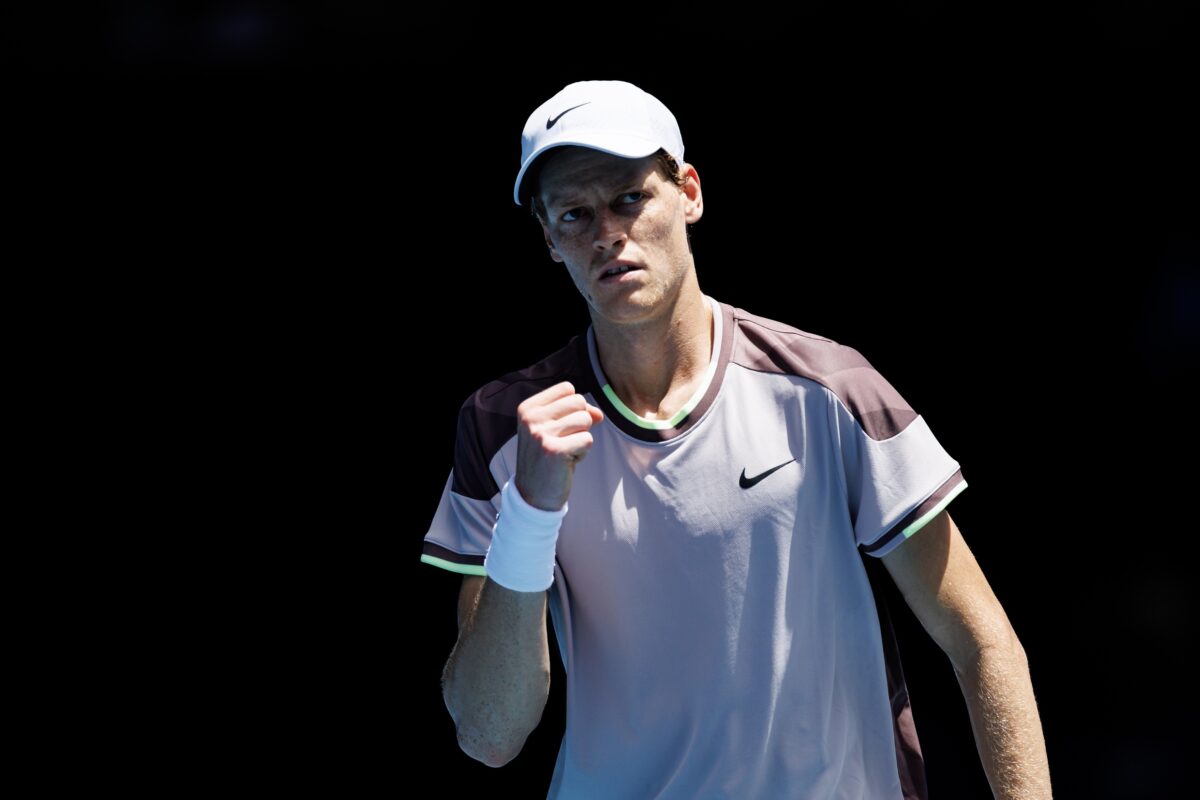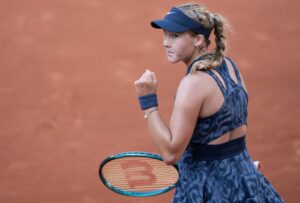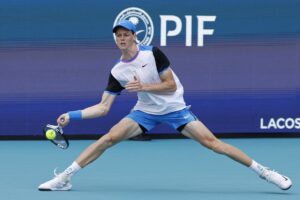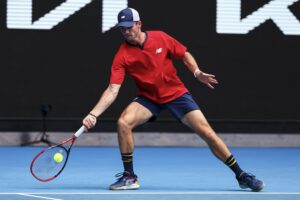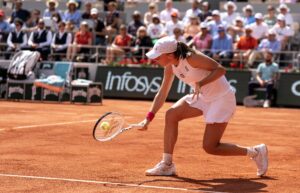For a country that is fairly crazy about tennis, as judged by the number of tournaments that it stages, Italy has produced remarkably few Major singles champions, especially in recent decades. Indeed, the only Italian Major winners since 1976 (so, in very nearly a half-century) have been women, with Francesca Schiavone winning the French Open in 2010 and Flavia Pennetta winning the US Open in 2015, with the Women’s Singles final in New York that year being an all-Italian affair as Pennetta defeated her compatriot Roberta Vinci.
Now, however, after Jannik Sinner demolished Novak Djokovic in the first Australian Open semifinal, Italy has a chance of hailing its third male Major winner–if Sinner can defeat Daniil Medvedev, who beat Sacha Zverev in the other semifinal, in Melbourne on Sunday.
Who were the previous two Italian male Major champions? And what are Sinner’s chances of following in their illustrious footsteps? As ever, Martin Keady, our resident tennis historian, has the answers.
1.Nicola Pietrangeli: The Proto-Federer
Even the greatest sports people and artists invariably have predecessors, those whose influence may not have been immediately obvious in their own day but, over time, becomes unarguable. Thus, just as The Stooges and MC5 laid the groundwork for punk nearly a decade before Ramones and The Sex Pistols, so Nicola Pietrangeli, Italy’s first ever male Major champion and its only multiple Major winner (after he won the French Open in both 1959 and 1960), can be regarded as one of the forebears of Roger Federer, unquestionably the most aesthetically pleasing tennis player ever.
Pietrangeli was not actually born in Italy but in Tunisia, one of a long line of Italian immigrants to what was then a French colony. However, because of his heritage Pietrangeli always regarded himself as Italian and he moved to Italy early on in his life to pursue his tennis career. It was on the country’s numerous clay courts that he developed his sumptuous style of play, which, like Federer over half a century later, included a glorious single-handed backhand and staggering shot-making ability.
Unlike Federer, however, Pietrangeli was always a clay-court specialist; his best result at the Majors outside Roland Garros was reaching the Wimbledon semifinal in 1960. Fortunately for him, he was one of the finest clay-court players of his time, which, of course, was the amateur era, or the “shamateur” era, as it was sometimes called, because players were often paid illicitly by their federations. By the time tennis finally went fully professional in 1968, Pietrangeli was past his best and coming to the end of his career, and he finally retired in 1973.
A decade or so earlier, however, Pietrangeli had been the Prince of Paris. In 1959, he won his first French Open, beating Aussie great Neale Fraser in the semifinal and South African Ian Vermaak in the final. And he doubled up a year later, when he beat Luis Ayala, arguably Chile’s first great tennis player (and consequently the forebear of Marcelo Rios and Fernando González) in a classic five-set final, eventually triumphing 3–6, 6–3, 6–4, 4–6, 6–3.
Pietrangeli again reached the final of the French Open in 1961 and seemed set for a hat-trick of Roland Garros titles, but he lost in the final to Spain’s first great tennis player, Manuel “Manolo” Santana (the forebear of Nadal, Alcaraz, and countless other Spanish champions). Unfortunately for Pietrangeli, the result of the 1961 final was repeated in 1964, when Santana again beat him and he never reached another French Open final. Nevertheless, in winning back to back at Roland Garros, Pietrangeli became a legend of Italian tennis. And fortunately he is still a living legend, because, even at the age of 90, he is still highly visible as a spectator at the Italian Open and many of the other blue riband events on the European clay-court circuit.
Adriano Panatta: The Caretaker’s Son
The second Italian man to win a Major singles title, Adriano Panatta, may not enjoy the legendary status of Pietrangeli, but his own achievements were still hugely impressive, especially given his backstory. Just like Frances Tiafoe today, he was the son of a caretaker of a tennis court, who first began playing the sport when the paying customers had left for the day.
Unlike Pietrangeli, whose career was coming to an end just as Panatta’s was really beginning, Panatta was only an amateur for a brief period, before he turned professional at the start of the Open era. However, just like Pietrangeli, he was a clay-court specialist who thrived at Roland Garros and did far less well at the other Majors. (His best result at a Major outside Roland Garros was reaching the quarterfinal of Wimbledon in 1979.)
Panatta may only have won the French Open once, in 1976, when he defeated America’s Harold Solomon in the final 6–1, 6–4, 4–6, 7–6 (7–3). However, he has an arguably even greater claim to fame than being a one-time Major winner, because he was the only man to beat Björn Borg at Roland Garros, and he did so not just once but twice.
The first time was in 1973, when Borg was only 17 and playing in his first French Open, and Panatta beat him in four sets in the fourth round. Borg went on to win the next two French Opens in 1974 and 1975 and seemed set for a hat-trick in 1976 until Panatta beat him in the quarterfinals, again in four sets. After missing the 1977 edition because of injury concerns, Borg never lost another match at Roland Garros, winning the tournament four more times before he retired, making Panatta’s earlier double triumph over him all the more impressive.
Panatta never won another Major, but he did achieve something for his country that the more celebrated Pietrangeli never did, namely winning the Davis Cup. Pietrangeli did lead Italy to the Davis Cup final twice, in 1960 and 1961, but on both occasions they lost to the mighty Australian team of Laver, Emerson, Fraser et al, and it certainly did not help Pietrangeli and his Italian team-mates that both of those finals were played on grass. In 1976, however, although Panatta’s Italy had to play the final away in Chile, the surface was clay and Panatta won both his singles ties and his doubles tie (with Paolo Bertolucci) to secure Italy’s first and, until recently, only Davis Cup victory.
- Jannik Sinner: La Carota Divina?
Of course Jannik Sinner won Italy’s second Davis Cup title virtually single-handed in November of last year, as he defeated Novak Djokovic in both the singles, despite facing three match-points, and the doubles (alongside Lorenzo Sonego) on the same day in the semifinal. Then, less than 24 hours later, he thrashed Australia’s Alex de Minaur in the second singles tie of the final to secure a virtually miraculous win.
When he was interviewed on court after defeating Djokovic again in Melbourne, Sinner referred to those Davis Cup victories, as well as his earlier defeat of Djokovic in the group stage of the ATP Finals, saying that they had given him genuine belief that he can compete against and beat even the greatest players. After all, if you can beat the GOAT (which Djokovic is, at least statistically) twice in one day, anything else must seem relatively easy in comparison.
Ever since winning the 2019 NextGen Finals, Sinner has been earmarked as a potential Major winner. His progress had seemed to slow for a while, especially in comparison with Carlos Alcaraz, the 2021 Next Gen winner. But everything seemed to change when he won in Beijing last autumn, after which he has been virtually unstoppable.
In Beijing, Sinner not only beat Carlos Alcaraz en route to the final but defeated Daniil Medvedev, who he had lost to six times in a row before, in the final. Of course it is the Russian “Octopus” who Sinner will again face in the final in Melbourne on Sunday, but Sinner will have two aces up his sleeve. First, he has played far less tennis than Medvedev, who has spent almost twice as long on court (over 20 hours in total) as he has in Australia and will surely struggle to stay with Sinner if the match goes long. Secondly, having now beaten Djokovic in three of their last four matches, including in a five-set Major match, he need fear no-one else in the men’s game.
Thus, the stage is set for “La Divina Carota” (The Divine Carrot, as he has been nicknamed in his homeland, because of his red hair, which is very unusual in Italy) to become only the third Italian man to win a Major singles title. It will certainly not be easy against Medvedev. However, given his current astonishing form, Sinner and his legions of fans, both in Italy and outside it, can be confident. He has every chance of following in the footsteps of Pietrangeli and Panatta, and achieving a truly glorious Italian hat-trick.
Main Photo Credit: Mike Frey-USA TODAY Sports


